Most of the things we use today are powered by some kind of energy. The uses of such things create a huge amount of pollution. Since a long time, scientists and the government have been trying to make the cities free of pollution and renewable. Have you ever imagined how it would feel to live in a city whole of clean energy? Many of the cities are already on the verge of becoming fully renewable.
More than 100 U.S. cities and 140 large corporations having established 100 percent clean, carbon-free and/or renewable energy goals.
Some argue that 100% renewability is not the right goal, as the last 5 to 20% will be hard to achieve. But even getting to 80% renewability is a monumental step from where we are today.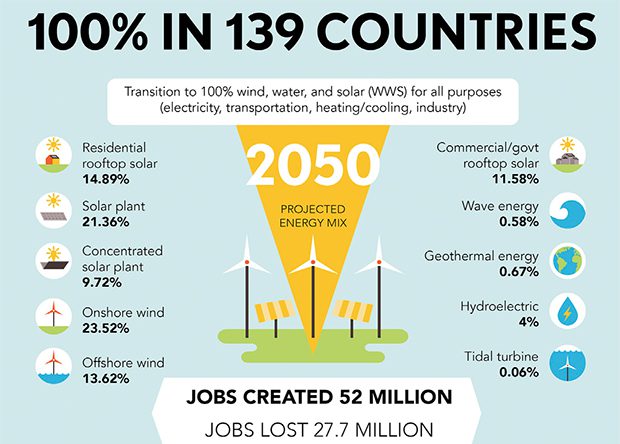
One of the main sources of clean energy would be solar energy. Setting up of solar cells and converting the whole system of energy into solar-powered would change the viewpoint of energy creation towards renewability.
The research report
A report was released by Berlin-based Energy Watch Group and the Lappeenranta University of Technology. It suggested solar energy could help the world transition onto full renewable energy within the next three decades.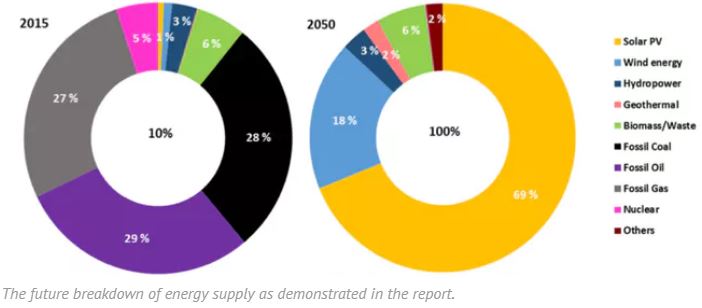
The team rigorously opens up a new perspective towards a shift to 100% renewable energy within the three decades. It features a cost-efficient vision of deep electrification of the heat and transport sectors around the globe.
“A transition to a global 100% renewable energy system is no longer a matter of technical feasibility or economic viability, but one of political will”.
How to acquire 100% renewable energy
To acquire 100% renewable energy of the entire world, the team structured nine major regions and 145 sub-regions. They analyzed an hourly resolution of 5-year time periods from 2015 until 2050. The model computes the cost-optimal mix of technologies, based on locally available renewable energy sources.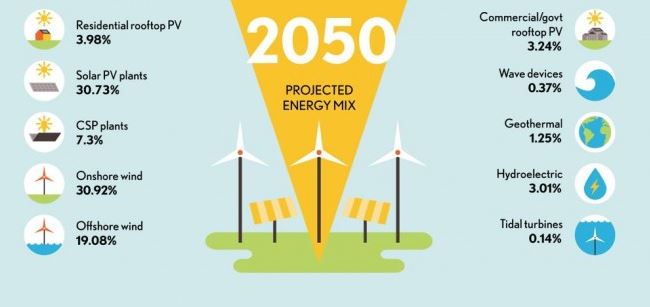
By 2050, the world’s population is expected to grow from 7.2 billion in 2015 to 9.7 billion. Final energy demand is expected to grow by about 1.8% annually. To meet such energy demand without creating pollution, solar power is definitely a necessity.
The sources
Solar power alone will generate about 69% of the total energy, followed by wind energy (18%). Biomass and waste (6%), hydro (3%) and geothermal energy (2%) by 2050. Wind energy and solar PV make up 96% of total electricity and approximately 88% of the total energy supply. It will have a synergetic balancing effect
Is it expensive?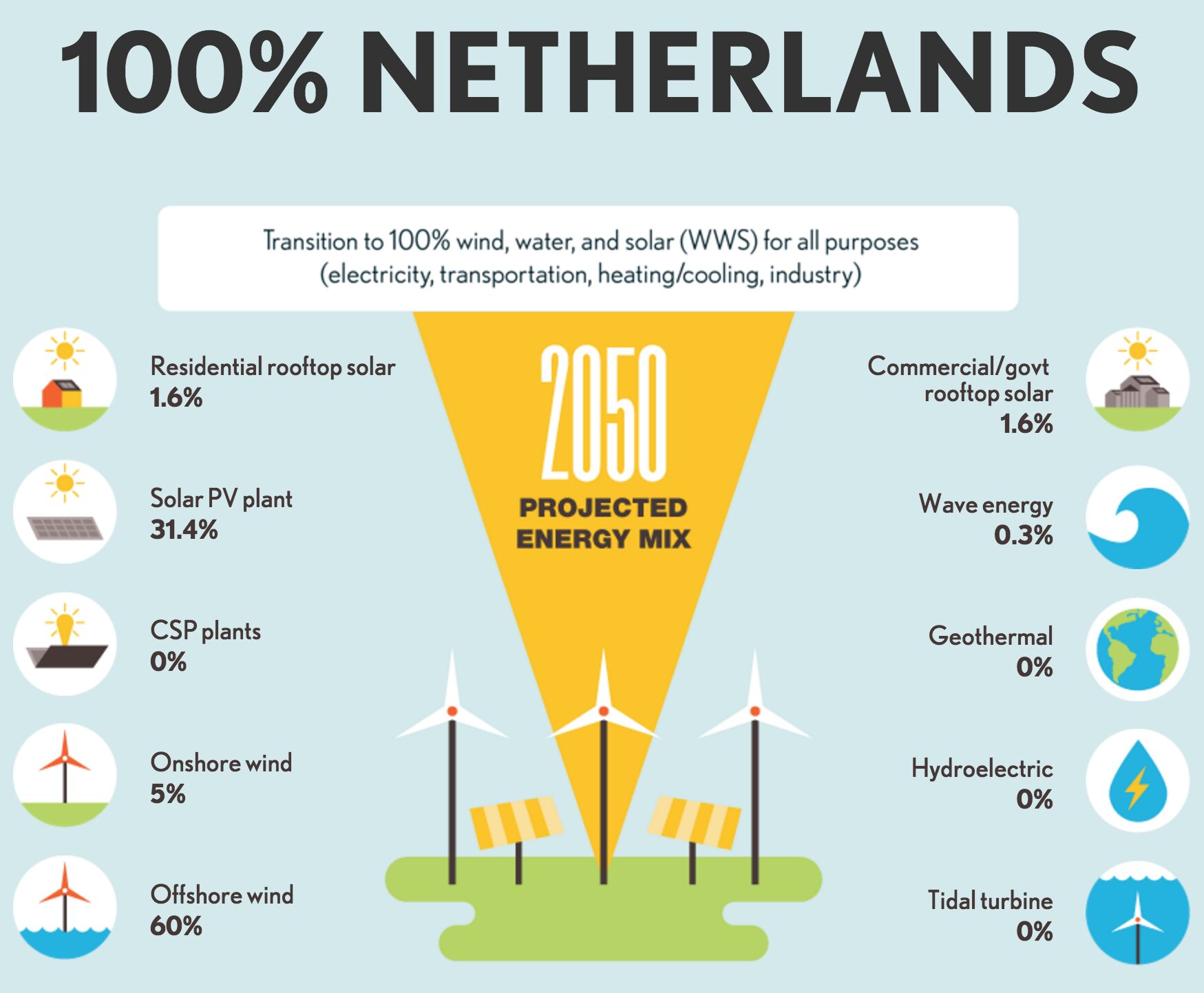
The Levelised cost of energy for a fully sustainable global energy system will be reduced from approximately 54 €/MWh in 2015 to 53 €/MWh by 2050. If we take the negative impact of the energy used today and also the cost of it then the 100% renewable energy is totally substantial. The new energy system will provide a win-win for the global community at large; with both economic and environmental benefits.
The cost of the new renewable energy will be heavily dependent towards the environment various regions will have a substantial amount of cost reduction. The Middle East and North Africa (-31%), North America (-22%), South America (-34%), and Europe (-15%), while achieving zero emissions by 2050.
Regional differences in electricity supply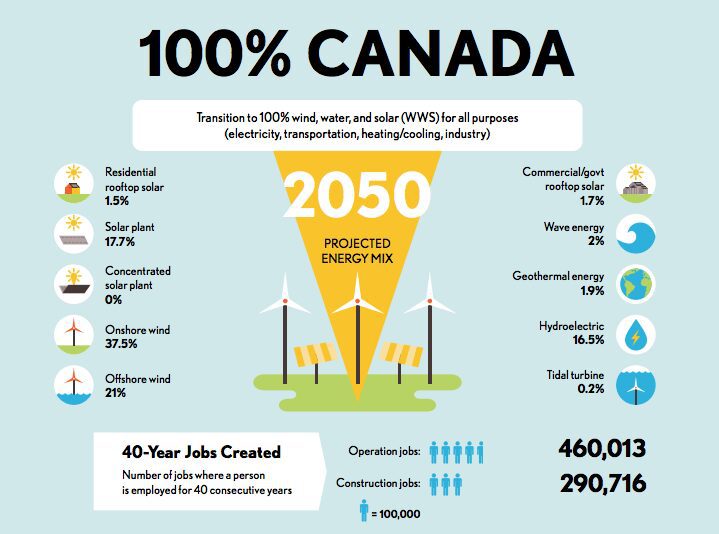
The supply of electricity will be different in different regions. The differences will be due to topographical conditions of different regions, almost all Sun Belt countries will use solar PV as their primary source of electricity.
-
South Asia (SAARC)2 will have a world record share of 95% solar PV electricity generation by 2050 in its cost-effective generation mix.
-
In Eurasia, onshore wind dominates electricity generation, with the highest shares worldwide, thus they will focus on wind energy.
-
By 2025, North America is set to have approximately 25% of the global wind energy provision
Is it possible to realize this dream?
To ensure a smooth, fast, and cost-effective transition to 100% renewable energy across all sectors, governments need to adopt national legislative acts that will ensure the swift uptake in the development of renewable energy, storage technologies, sector coupling, and smart energy system.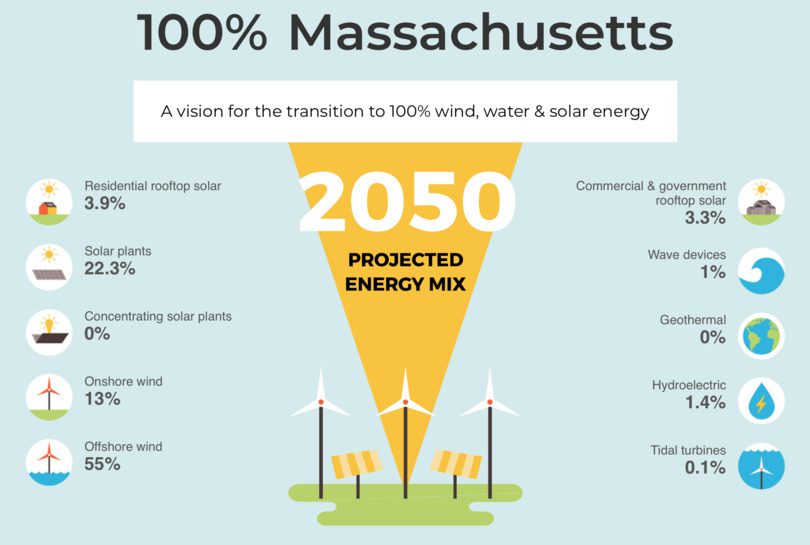
According to the report, the government should initiate direct private investment in
renewable energy and other zero emission technologies. The tariff rates should be lowered for the institutions or enterprises supporting and contributing towards the cause.
A responsible phase-out of all state subsidies to fossil fuel and nuclear energy generation is also necessary and introduction of carbon, methane and radioactivity taxes should be paid attention to.
Conclusion
Solar energy has been a booming source of energy in the present time. Many of the industrial units have been investing in solar energy generation. It is cheap and a good source of energy.
Elon Musk has declared 2019 as the year of the Tesla Solar Roof, firms like Microsoft have doubled down on their energy commitments. Also, energy hogs like airport operators are moving to solar en masse.



